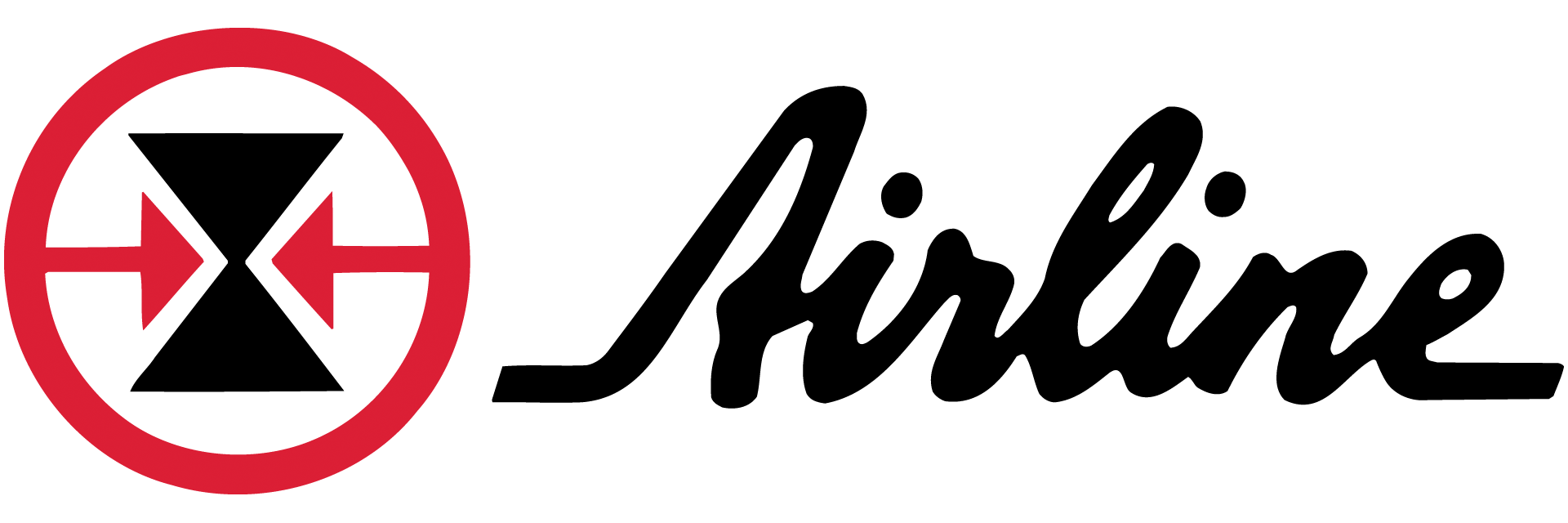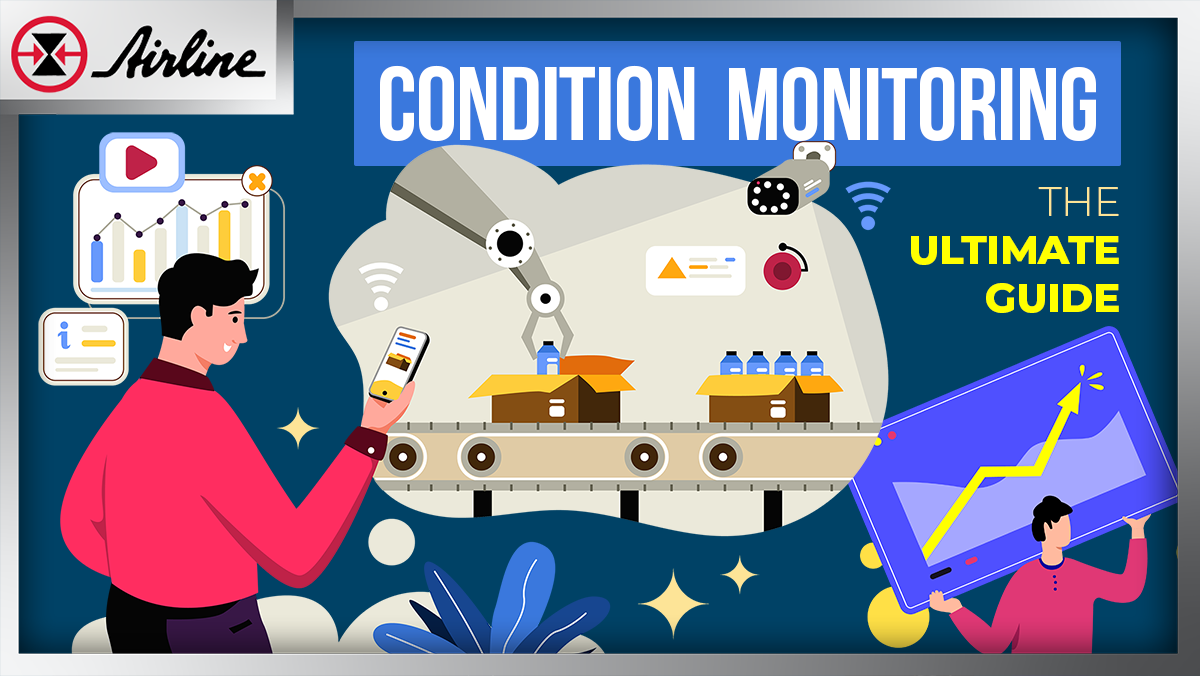Editor's note: This post has been updated in July 2025 for comprehensiveness.
Imagine you're a maintenance professional finally enjoying a summer Saturday. You're grilling by the pool, the scent of barbecue in the air, when your phone rings. An emergency shutdown. A critical machine has failed, production is at a standstill, and you’re the only one who can fix it.
As your ribs burn on the grill and your family groans in frustration, you’re back at the plant, scrambling to diagnose the problem.
Now, rewind the clock.
Imagine if a month earlier, you had received an alert about that same machine. With a Condition-Based Monitoring (CbM) system in place, you could have reviewed the vibration analysis, identified the fault early, executed a plan, and kept operations running smoothly.
No burnt ribs. No production halt. No weekend ruined.
That is the power of CbM, a form of predictive maintenance that helps reduce machine downtime and avoid surprises, especially during peak summer production when overheating risks and demand spikes increase.
In this guide, we will show you how to make that shift so you can stop reacting to emergencies and start planning with confidence.
Jump to Section:
Avoid Equipment Failures Before They Start.
Get a personalized monitoring plan and free consultation from our experts.
→ Request Your Free Consultation
What is Condition Monitoring?
What does condition monitoring mean in industrial maintenance?
Condition monitoring, also known as condition-based monitoring or CbM, is the continuous tracking of equipment health through sensors that measure vibration, temperature, oil quality, and other indicators. By flagging abnormal patterns early, a maintenance team can repair assets before they fail, reducing downtime and extending machine life.
CbM is a core method within Predictive Maintenance (PdM) strategies. While PdM refers broadly to any approach that anticipates failures before they happen, CbM focuses on using real-time data from equipment to make those predictions more accurate and timely.
Why Condition Monitoring Matters
Detects developing faults before they become costly failures
Enables proactive scheduling of maintenance work orders
Cuts unplanned downtime and boosts overall equipment effectiveness
In short, condition monitoring gives maintenance teams the insight they need to keep production on schedule and workers safe.
How Condition Monitoring Works
1. Sensors collect real-time data on vibration, temperature, and lubrication quality.
2. CbM systems compare the live readings with baseline values to spot deviations.
3. Alerts notify technicians when a threshold is crossed, allowing them to take action before damage escalates.
4. Vibration analysis and related diagnostics confirm the root cause and guide the repair plan.
With online data streaming around the clock, a maintenance team always knows each asset’s condition and can prevent equipment failure rather than reacting to it.
Condition Monitoring and Predictive Maintenance
Condition monitoring is one of the most effective techniques used in predictive maintenance programs. By combining real-time data from sensors with trend analysis, CbM allows teams to shift from reactive or calendar-based tasks to truly predictive interventions. The result is a more reliable, efficient approach to industrial maintenance.
Learn more about predictive maintenance in our video, "Predictive Maintenance Explained."
Benefits of Condition Monitoring
Condition monitoring is a proactive maintenance strategy that enhances equipment reliability, reduces downtime, and improves safety in industrial environments. Below is a summary of its key benefits:
Key Benefits at a Glance
| Benefit | Description |
|---|---|
| Unplanned Downtime Reduction | Early fault detection allows repairs to be made during planned downtime, minimizing surprise failures. |
| Cost Savings | Cuts both direct and hidden maintenance costs by addressing issues before they escalate. |
| Improved Operational Efficiency | Prevents cascading failures and improves overall equipment effectiveness (OEE) across the facility. |
| Optimized Maintenance Planning | Enables maintenance teams to service multiple machines simultaneously, reducing labor inefficiencies. |
| Enhanced Employee Safety | Prevents hazardous breakdowns, limiting exposure to unsafe conditions for maintenance personnel. |
Condition Monitoring Statistics and ROI Benchmarks
According to the U.S. Department of Energy’s Federal Energy Management Program (FEMP), condition-based (predictive) maintenance programs can reduce maintenance costs by 25–30% and decrease equipment breakdowns by 70–75%. This demonstrates the significant impact that condition-based maintenance strategies can have on both cost savings and operational efficiency. (Source: U.S. Department of Energy, FEMP, Operations & Maintenance Best Practices Guide, Release 3.0)
⚠️ The Hidden Costs of Reactive Maintenance
Emergency repairs come with more than just the price of parts and labor. These hidden costs, like production delays, expedited shipping, and overtime pay, can be up to five times higher than planned maintenance expenses. By using CbM systems and shifting to predictive maintenance, facilities can dramatically cut unplanned expenses and improve profitability. |
Key Types of Condition Monitoring
To detect faults effectively, it is crucial to choose and implement condition-monitoring techniques specifically tailored to your critical assets. Common areas for continued monitoring include vibration analysis, lubricant analysis, and infrared thermography. These techniques include sensors and connected devices, timed physical inspection by humans, lab testing, and testing using specialized equipment.
Vibration Analysis
 Vibration analysis, a type of vibration monitoring, is the most popular form of condition monitoring, involving the detection and assessment of rotational and structural issues. It is most commonly used in machines with rotating pieces, bearings that sustain wear, and those that may leak, including:
Vibration analysis, a type of vibration monitoring, is the most popular form of condition monitoring, involving the detection and assessment of rotational and structural issues. It is most commonly used in machines with rotating pieces, bearings that sustain wear, and those that may leak, including:
|
✔ Pumps |
✔ Motors |
| ✔ Gearboxes | ✔ Compressors |
Vibration analysis uses sensors to measure vibration patterns in rotating machinery, which have characteristic vibration signatures reflecting parameters like balance and bearing condition.
Thermal Analysis
Thermal analysis in condition monitoring focuses on detecting the presence of developing faults by capturing the heat emitted from assets and analyzing the images to reveal potential failures such as worn parts, excess heat, or thermal anomalies. Thermography is a non-contact method using cameras to detect infrared thermal emissions, providing early warning of emerging problems.
 Temperature monitoring can be passive, using IR cameras, or active, using thermocouples and RTDs. For a product example, consider the K6PM Thermal Monitor from Omron Automation, which remotely monitors and analyzes the temperature status of control panel devices.
Temperature monitoring can be passive, using IR cameras, or active, using thermocouples and RTDs. For a product example, consider the K6PM Thermal Monitor from Omron Automation, which remotely monitors and analyzes the temperature status of control panel devices.
Oil Analysis
Oil analysis in condition monitoring involves testing lubricants, hydraulic fluids, and other liquids to reveal signs of contamination and wear. It measures constituents and parameters to assess oil conditions and identify wear in machine components. While full contamination testing must be sent to and analyzed by a laboratory, sensors can be installed in lubrication systems for continuous oil level and temperature monitoring. An example of oil analysis results is shown below.

Oil Analysis ResourcesLooking to implement or improve your oil analysis process? Start with these resources: How to Take an Oil Sample (Blog Post) Watch: What You Can Learn From an Oil Analysis (Video) Request a Free Premium Oil Analysis Sample Kit (HYDAC) |
Acoustic Analysis
Acoustic analysis in maintenance is broadly categorized into sonic and ultrasonic techniques. Sonic analysis typically applies to lubrication analysis, identifying insufficient or degraded lubrication issues. Ultrasonic monitoring can be used to detect leaks, cavitation, and improperly seated parts by capturing high-frequency sounds emitted from these anomalies. Acoustic analysis captures sound waves generated by machinery, helping to detect abnormalities that indicate potential issues.
Need help choosing the right monitoring method for your equipment?
Talk to a Technical Expert
Implementing Condition Monitoring Systems
Establishing a condition-based monitoring program requires a structured approach. First and foremost, any conditioning monitoring system needs to define baseline limits to warn when equipment starts deteriorating. Another essential task is establishing an equipment register to document all assets within the facility and evaluate their criticality to overall operations. This allows for developing appropriate condition-monitoring techniques, technologies, or strategies.
The Four Pillars of Implementing Condition Monitoring
The four pillars of implementing condition monitoring are:
| 1. Detection | Using sensors and data collection tools to gather information about the equipment’s performance. |
| 2. Diagnosis | Analyzing the performance data to determine abnormalities or patterns indicating an impending failure. |
| 3. Prognosis | Data analysis to predict the remaining useful life of the equipment. |
| 4. Program | Developing and implementing a maintenance program based on the findings of the analysis. |
Data Collection Methods
Different systems collect data in various ways, such as:
|
✔ Installing sensors in motor control cabinets |
✔ Using handheld thermal sensors |
| ✔ Electrical monitoring, which provides real-time analysis of electrical parameters like voltage and current | ✔ Vibration monitoring tools, which consist of sensors, data acquisition hardware, and condition monitoring software. |
Analog-to-digital converters (ADCs) in data acquisition systems transform analog signals into digital data for analysis. Signal conditioning circuitry in data acquisition units prepares the analog signal from sensors for acquisition by ADC.
Step-by-Step Guide to Launching Your CbM Program
Here’s how you can get started with condition monitoring and optimize asset health:
1. Conduct an Initial Baseline Survey
Conduct an initial baseline survey to record essential information about assets, assess asset criticality, and identify warning signs before breakdowns.
✔ Record essential information about assets
✔ Assess asset criticality
✔ Identify warning signs before breakdowns
2. Define Acceptable Operational Performance
Establish standards for performance metrics. These can include indicators like temperature, vibration monitoring, and oil analysis results.
3. Select Suitable Condition Monitoring Techniques
Select suitable condition monitoring techniques such as vibration analysis, oil analysis, and acoustic analysis, aligning them with the condition monitoring objectives above.
4. Utilize Technology for Data Collection
Make the process easier and more efficient by utilizing technology and data collection to continuously monitor asset health and alert maintenance teams to potential issues in real-time
5. Create a Preventive Maintenance Plan
Certain tasks, such as sending routine hydraulic fluid testing to a lab, cannot be fully automated. For these assets, it's essential to establish a timed preventive maintenance schedule to ensure they are properly managed.
6. Train Staff
Train staff by providing training in areas such as vibration and oil analysis to help them understand indicators and know when to seek technical assistance. Also, train them in how to utilize any connected technologies, manage alerts, etc.
Selecting Condition Monitoring Technologies
Condition monitoring software ranges from basic tools offering statistical values to advanced systems for raw data analysis and historical trend visualization. An intuitive dashboard can help visualize performance data and requires little training, making it essential for user adoption and efficient operations.
The Role of IIoT in Modern Condition Monitoring
The fusion of AI with IIoT facilitates intelligent decision-making. It analyzes patterns and deviations in data gathered from sensors and connected devices, thereby:
📱 Alerting maintenance teams about any detrimental changes in asset condition
📈 Offering real-time insights into the health and performance of industrial machinery
👍 Allowing for remote monitoring and control
🌍 Enabling manufacturers to oversee operations globally and create a more responsive production environment.
The Initial Setup of IIoT Devices Involves:
✔ Placing monitoring devices on critical assets to collect data and share it with connected systems for analysis
✔ Ensuring compatibility between monitoring devices and existing infrastructure is crucial
✔ To capture accurate data on equipment performance, devices must be properly installed.
✔ Setting up alert mechanisms and defining baseline performance metrics.
Top II0T Condition Monitoring Technologies Include:
 Asset Monitoring Gateway (AMG) and Snap Signal by Banner Engineering: Real-time monitoring software and components that enable you to continuously track asset performance locally via Ethernet IP or Via Cellular connection to Banner Cloud Data Services (CDS) where you can get real-time data and notifications via Email or Text.
Asset Monitoring Gateway (AMG) and Snap Signal by Banner Engineering: Real-time monitoring software and components that enable you to continuously track asset performance locally via Ethernet IP or Via Cellular connection to Banner Cloud Data Services (CDS) where you can get real-time data and notifications via Email or Text.
 PdM Solutions by Omron Automation: Their portfolio includes the S8VK-X series power supply’s, the K6PM thermal condition monitor, K6CM series for -Three-phase motor monitoring - Insulation degradation monitoring & Temp and vibration monitoring.
PdM Solutions by Omron Automation: Their portfolio includes the S8VK-X series power supply’s, the K6PM thermal condition monitor, K6CM series for -Three-phase motor monitoring - Insulation degradation monitoring & Temp and vibration monitoring.
 Air Management System (AMS) by SMC: This system measures air consumption, flow rate, and leakage in real time.
Air Management System (AMS) by SMC: This system measures air consumption, flow rate, and leakage in real time.
 CytroBox by Bosch Rexroth: This intelligent hydraulic power unit offers condition monitoring capabilities for fluid power systems.
CytroBox by Bosch Rexroth: This intelligent hydraulic power unit offers condition monitoring capabilities for fluid power systems.
 SensoNODE by Parker: A complete wireless condition monitoring system that works with their SensoNODE sensors to monitor pressure, temperature, and humidity levels in real time.
SensoNODE by Parker: A complete wireless condition monitoring system that works with their SensoNODE sensors to monitor pressure, temperature, and humidity levels in real time.
Video Highlight: Asset Monitoring Gateway by Banner
The Asset Monitoring Gateway (AMG) by Banner Engineering provides real-time insights into the operation and performance of assets in your facility. Watch our video of the AMG in action at Airline’s facility and see how easy it is to use.
|
Interested in these Condition Monitoring Technologies? Explore CbM technologies from Banner & Omron that fit your application needs. |
Condition monitoring is a game-changer in industrial maintenance.
Detecting potential issues before they escalate into major failures enables proactive maintenance, reduces unplanned downtime, and enhances both machine performance and employee safety.
Successfully implementing a condition monitoring program requires a structured approach, including selecting the right technologies, establishing baselines, and training your team.
That's where we come in.
At Airline Hydraulics, our technical experts specialize in specifying and supporting condition monitoring systems tailored to your equipment, processes, and budget. Whether you’re just starting out or looking to upgrade your existing setup, we’ll help you cut through the complexity and make confident, cost-effective decisions.
✔ Request a free consultation / Get a personalized monitoring plan
✔ Explore real-time tools that prevent downtime
» Contact Airline Hydraulics to Get Started
Additional Resources
- More Maintenance Articles
- More Predictive Maintenance Articles
- Maintenance Strategies Explained | Reactive, Preventive & Predictive Maintenance
- Overall Equipment Efficiency: How to Calculate & Achieve OEE
Related Products
- Asset Monitoring Gateway by Banner Engineering
- Snap Signal by Banner Engineering
- PdM Solutions by Omron Automation
- Air Management System (AMS) by SMC
- CytroBox by Bosch Rexroth
- SensoNODE by Parker








Leave Comment